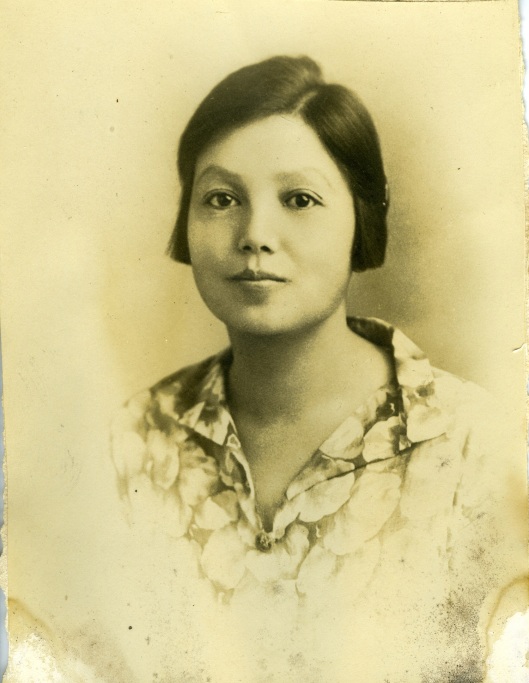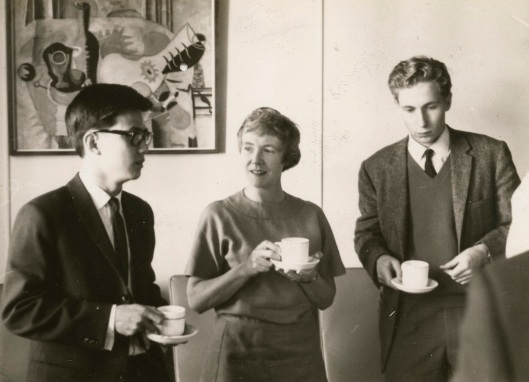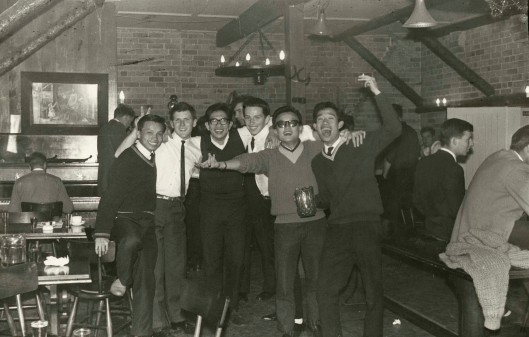
Dr Kathleen Pih, photographed by J.J. Webster, Dunedin, c.1930. Image courtesy of Presbyterian Research Centre, P-A154.19-59.
Chinese students have a long history at Otago. I’ve posted before about the big impact that Colombo Plan students from Asia had on the university from the 1950s to 1970s – many of them were Chinese Malaysians. As the Colombo Plan wound back and private international students grew in number, Malaysians remained an important presence on campus. The late 1990s also saw the beginnings of an influx of international students directly from China – their numbers peaked at 700 in 2005 and remain substantial today. But there is, of course, a long history of Chinese migration to New Zealand and the earliest Chinese students at Otago were homegrown – people who had been born or raised here.
I recently had the privilege of talking with two well-known members of Dunedin’s Kiwi Chinese community – James Ng, medical doctor and historian of the Chinese in New Zealand, and Peter Chin, lawyer, singer, and former mayor of Dunedin. Both have fond memories of their Otago student days and generously shared some insights into the Chinese community at the university. James Ng came from Ashburton to Otago to study medicine in 1954 – he describes himself as being at the tail end of the first wave of New Zealand Chinese university students. That wave resulted from the changing demographics of the Chinese community. For many decades immigration policy prevented the settlement of Chinese women in New Zealand, so many Chinese men here remained single or left families behind in China. When restrictions were reduced during World War II more women and families arrived in New Zealand. Peter Chin, who started his law degree at Otago in 1959, was born in Dunedin as part of the “baby boom” resulting from the influx of Chinese women to this country in the 1940s.
While some pioneering Otago Chinese trained in professions such as dentistry and law before these became university courses, and Norman Lo Keong graduated in engineering from Canterbury, the University of Otago’s first Chinese graduates were in medicine. The honour of being first goes to Kathleen Pih (Pih Zhen-Wah). Born in 1902 in Antung, China, she came to New Zealand in 1908 with her foster mother, a Dunedinite who had been working with the China Inland Mission. Special permission was required from the Governor-General for Kathleen to gain entry to New Zealand. She went to primary school in Waimate and had her secondary schooling at Otago Girls’ High School, enrolling as a university student in 1921. After graduating in medicine in 1929, she returned to China as a missionary for some years. She later completed specialist training in ophthalmology in London and married anatomy professor Francis Chang of Shanghai.They worked in China, Singapore and Hong Kong before retiring to New Zealand in 1969.
The next Chinese student at Otago was Roy Ting Shang Law, who commenced his medical course in 1937. He finally graduated in 1947 – this was a period when many students took extra years to complete their course, and the fact he had to work to support himself and his wife obviously didn’t help the progression of his studies. Dr Law established a very successful general practice in Wellington and this had quite an impact on New Zealand’s Chinese community. Once they saw how acceptable a Chinese doctor could be to wider society, they were happy to encourage their children to study medicine. James Ng’s parents were initially reluctant for him to undertake tertiary study, thinking business offered better opportunities, but Dr Law’s success swayed them to allow their son to come to Otago, albeit not to study in the field which originally interested him – geology!
The health sciences remained the most popular Otago courses for Chinese students, attracting people from all over New Zealand. Douglas Ngan Kee of Whanganui became the first Chinese dental graduate in 1950. The specialist courses in mining and home science also brought Chinese students to Otago, while arts and law attracted a smaller number, most of them southerners. By the 1950s Otago was also enrolling students from Fiji’s Chinese community, while the Colombo Plan brought Chinese students from elsewhere, notably Malaysia.

Jocelyn Wong, an arts student from Masterton, and Peter Chin, a law student from Dunedin, are at centre front of this group of students at a St Margaret’s College ball in the early 1960s. Image courtesy of Peter Chin.
There was no special club or society for Otago’s Chinese students, though many took part in activities of the local Dunedin Chinese Association. Some also participated in the International Club, which was mostly run by European women students. Other than this, they took part in activities according to their personal interests – for instance, James Ng joined the tramping club. Like many out-of-town students he also mixed widely with others by living in a residential college, thriving at Aquinas, where he was one of the founding residents.
The biggest priority for Chinese students was their studies – their reputation for diligence is a long-standing one. Extra-curricular activities came second to work, and Peter Chin notes that he was an exception in his generation for the extent of his involvement in campus activities. His first year was “a disaster” academically but a great success socially thanks to his talent for singing. Along with a few school friends he auditioned for the capping chorus, and as a result was asked to audition for the sextet. Becoming part of this elite group provided him with an instant introduction into student society. He sang with the sextet for 3 of his 5 years at Otago, and also became capping chorus master. In his final year he served on the OUSA executive, having been selected as their business manager, a role traditionally held by a law student.
In the 94 years since the remarkable Kathleen Pih first became an Otago student, many of New Zealand’s Chinese community have followed in her footsteps. My thanks to James Ng and Peter Chin for sharing memories and photographs of Otago student life in the 1950s and 1960s, along with some stories of their predecessors!



